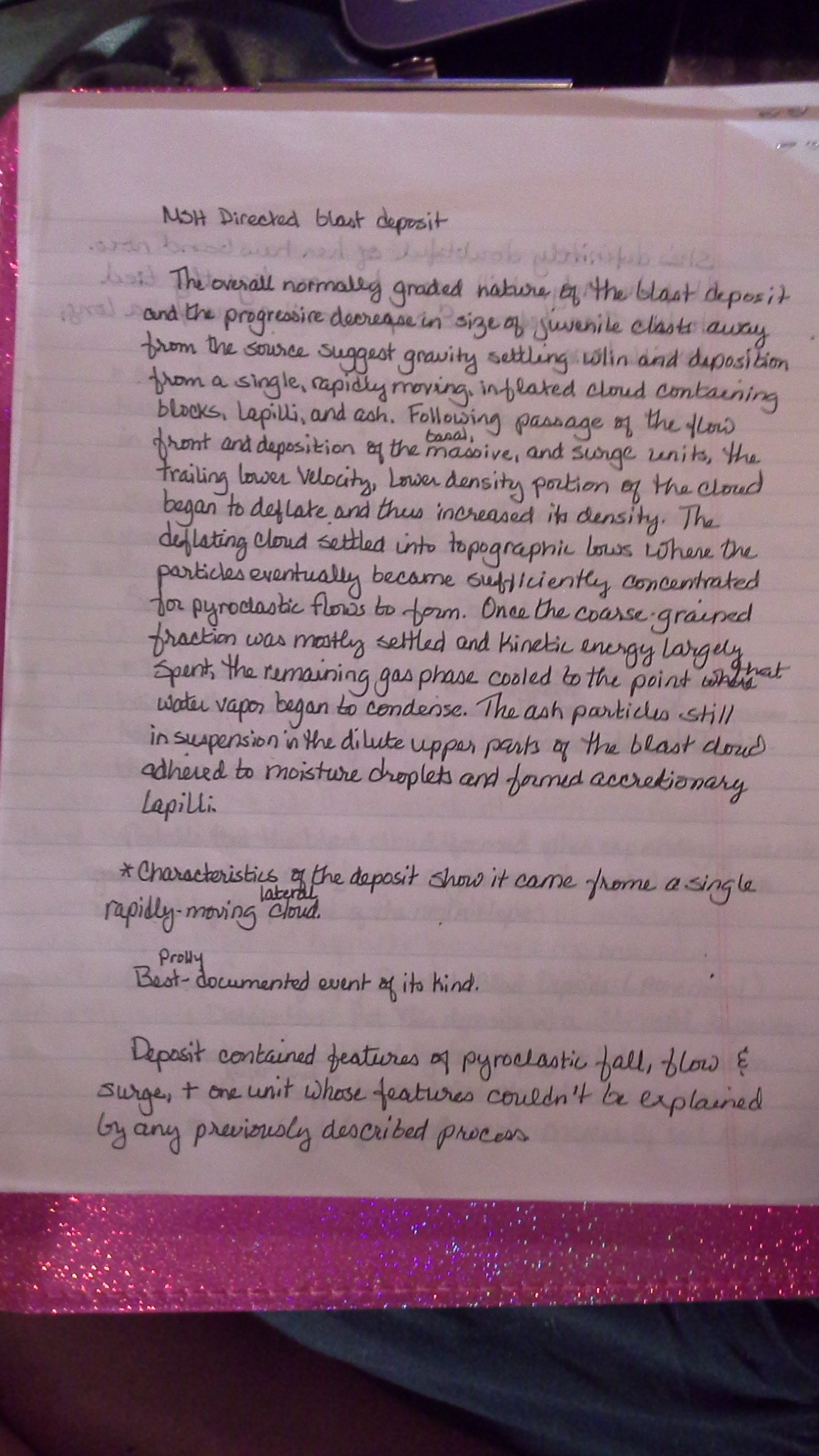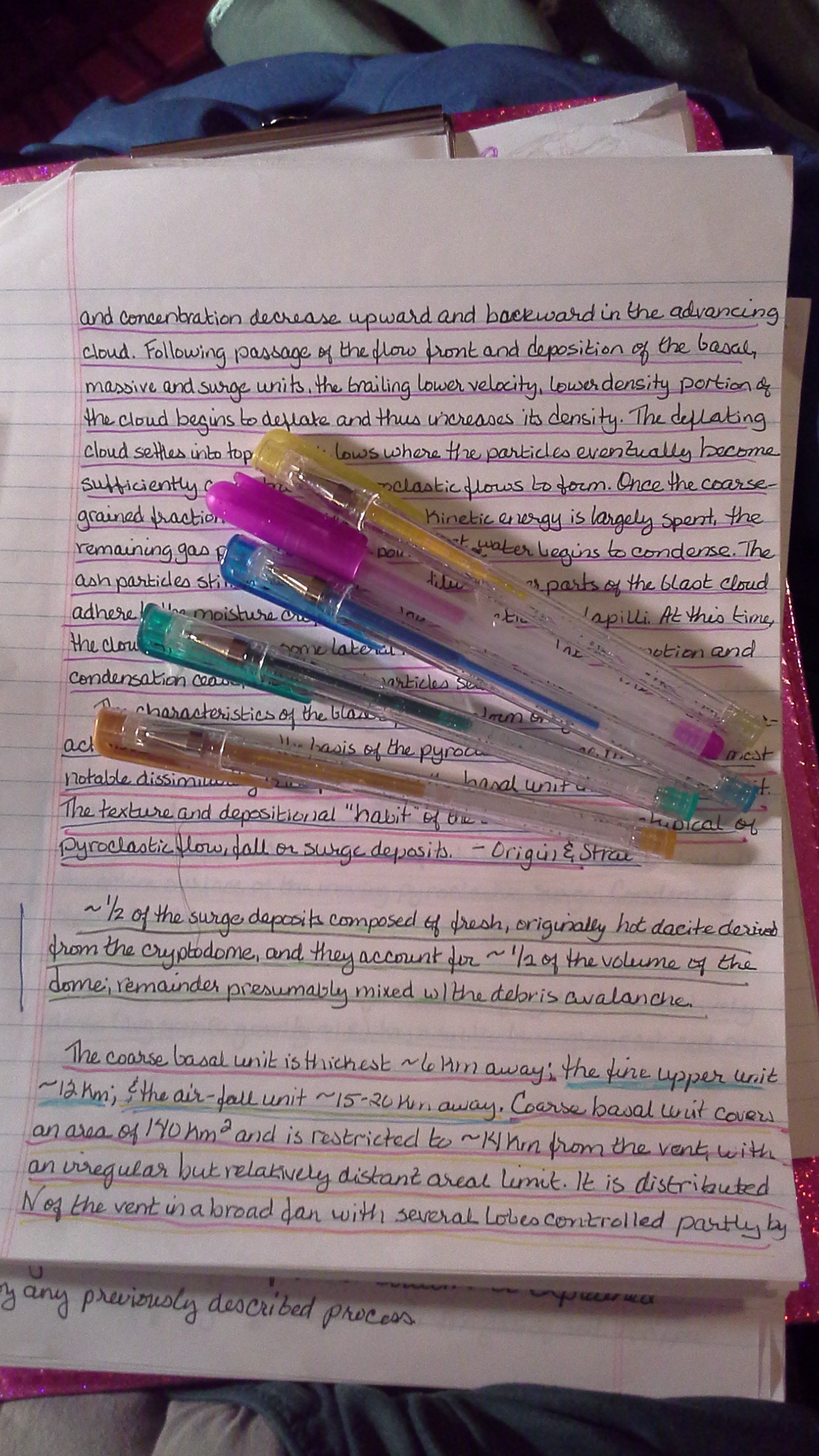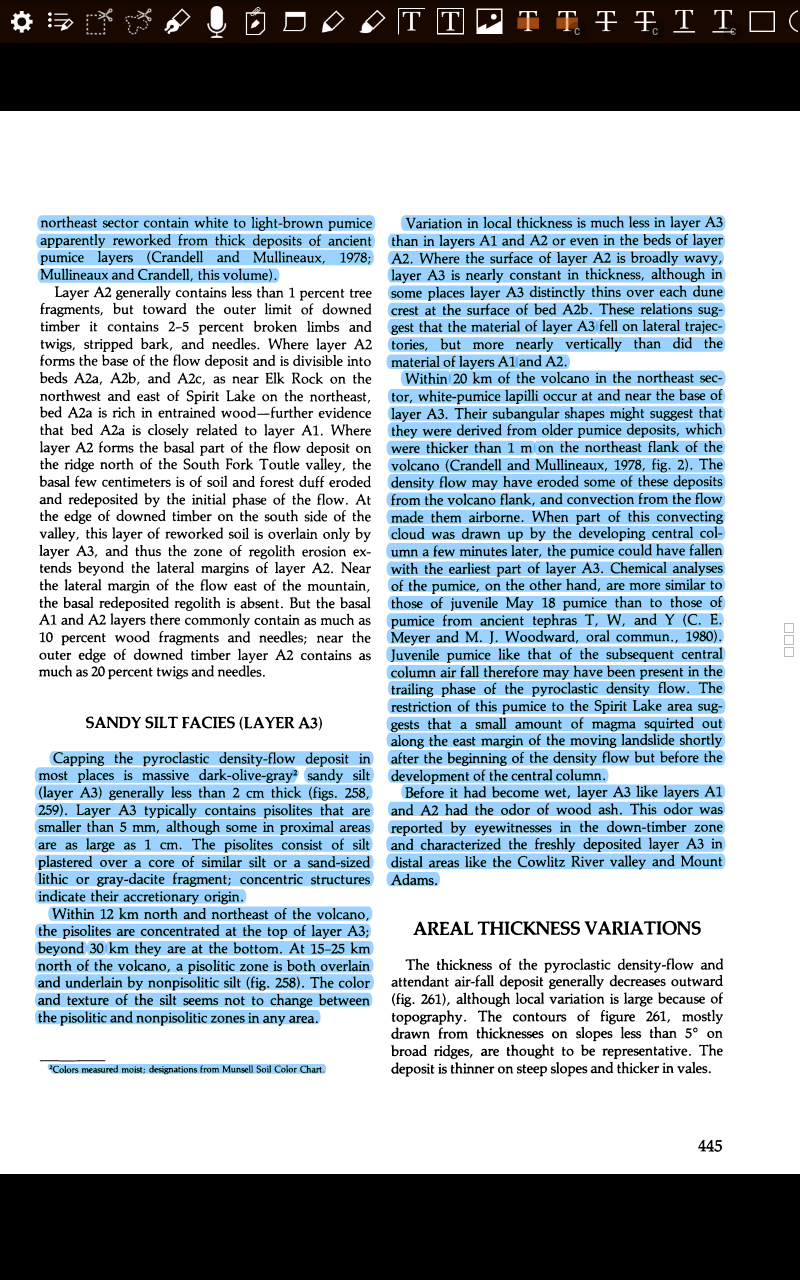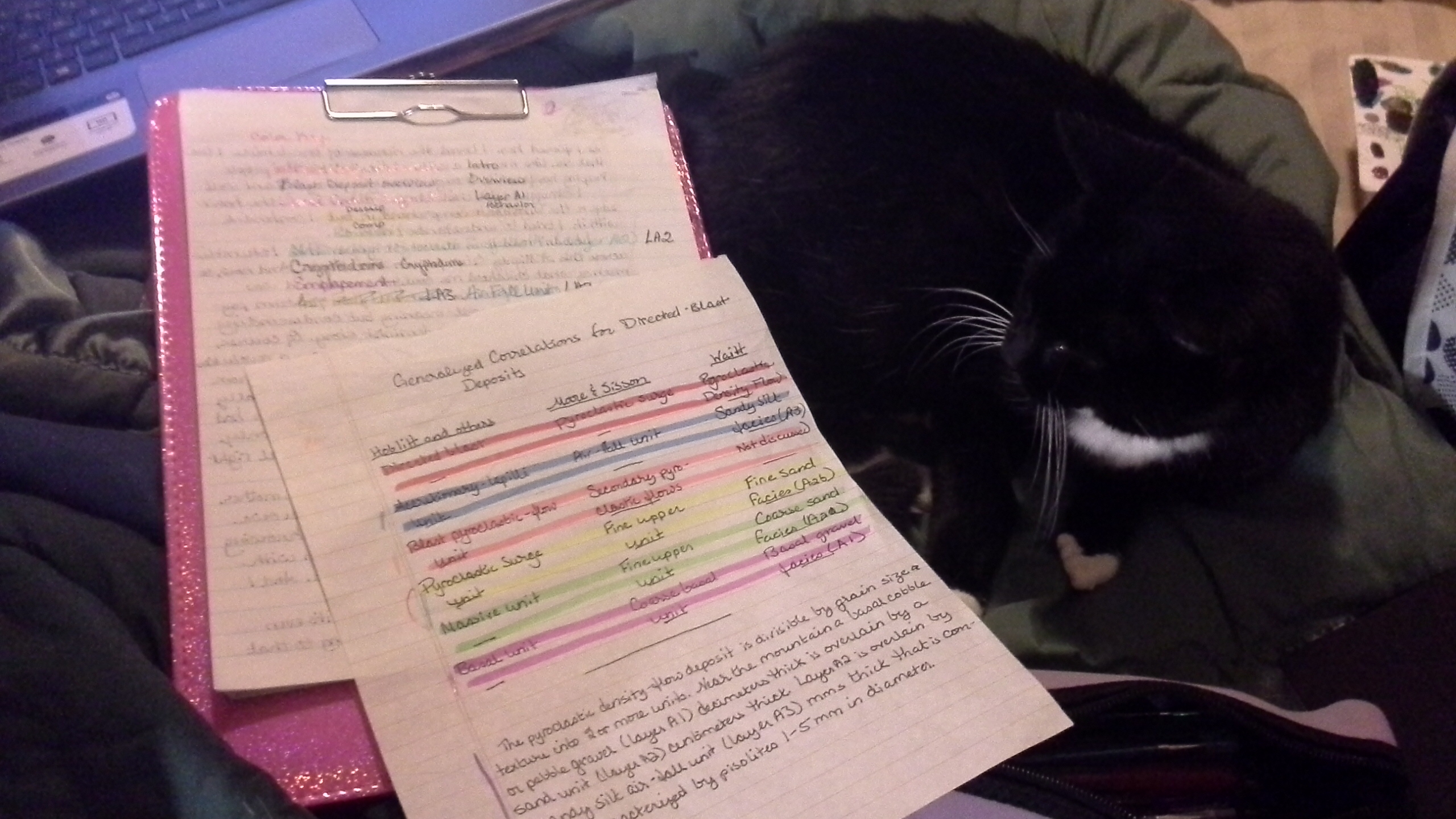Ready for an inside look into my non-fiction creative process? Don’t laugh. I’ve spent decades trying one method and another, and this turned out to be the only thing that works for me.
First, of course, I read up on my subject. I highlight the bits that seem relevant.
Then I take notes on my readings by hand. No, copy-paste doesn’t work even when that option is available – it’s only in hand-copying the words a letter at a time does my brain really start to deeply process what it’s seeing. It forces me to slow down and think.

Next, I have to organize that mess o’ notes. Since they’re not electronic and I’m damned well not going to spend a bunch of time typing them, I color-code them with my huge collection of multi-colored pens. Glittery ink’s my favorite. As I read through the notes I’ve taken, I start underlining and barring sections based on whatever criteria start to stand out. In this case, I’m coloring by which layer of the surge deposit we’re dealing with, a description of it, its composition, and how it was emplaced. There’s more, but not on that particular page. (This is why the blast deposits are taking me so long. They’re complex.)

At the end, I have some very colorful pages, a color key, and an idea of how to sort things out. I can group the various colors into coherent themes. I can finally tell the story contained in all that academic scientific language.
Yes, it takes time. Probably more time than it should. Other writers probably have far more efficient ways of doing this stuff. But none of the “efficient” methods I’ve tried so far help me get to know the material intimately enough to compose with it. So it’s lots of ink and paper and time for me, and eventually, geological stories for you.
(Thankfully, I don’t have to use this process with creationist textbooks and Bible stories. Those are simple and quick. Fact-checking and laughing at awful mythology is much easier than trying to understand complicated science and boil it down to layman’s language without simplifying it into senselessness.)




Thanx for revealing how you learn all that technically complicated stuff.
There is an interesting side issue: your handwriting. To me, at least, it’s very good. It’s something like what I read about long ago: italic handwriting, a sort of half-cursive, half-block style. When I learned about that, I adopted it, and people complained much less about my handwriting. I remember using that style recently and someone said that my handwriting was very good for a guy.
Incredibly well organized.
I also am impressed by the amount of writing things out by hand. Computers made a better writer out of me, because I always detested the mechanical aspects of writing – multiple drafts, etc. I found it to be pure drudgery, and actually physically uncomfortable. Being able to edit & revise on the fly made a huge difference for me.
Yes, that also. Computers have been a great help for me. Even the Intimidating Big Machines that I once used were more convenient than handwriting or typewriters.
I remember starting on command-line text editors. I soon learned the trick of making it display a lot of lines so I could see what I’d written.
Then I went on to what might be called ASCII-art-GUI text editors. I hated one called vi, because its dual-mode editing was so confusing to me. It switches between input mode, where your typing is interpreted as text input, and edit mode, where your typing is interpreted as edit commands. I much preferred single-mode editors like edt and emacs and pico. I remember typing documents on a computer running VMS than on one running a flavor of Unix, because the VMS one had a much nicer text editor than the Unix one: vi. I’d then send the documents over to the Unix one, because they’d then be used to make nice formatted output on a laser printer. Formatted including lots of equations.
Then, of course, bitmap-GUI text editors like on MacOS and Windows.